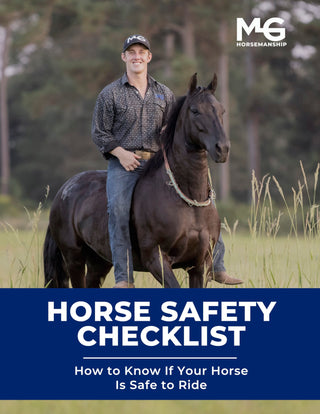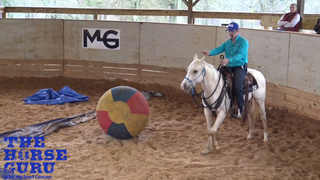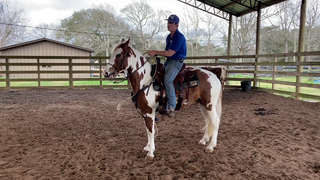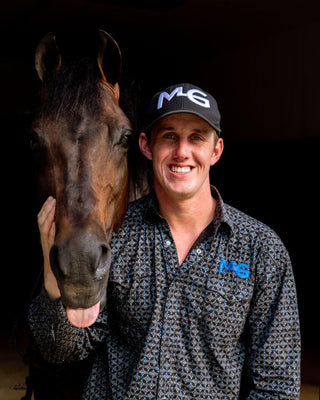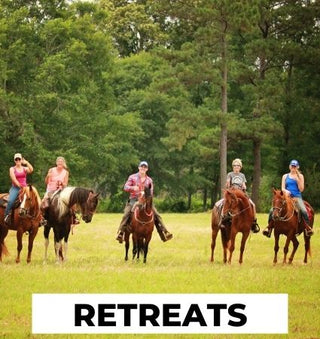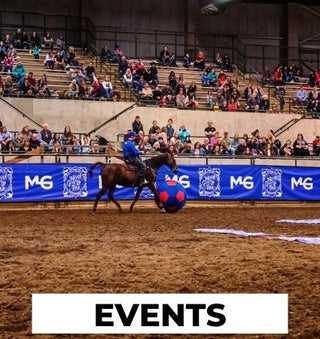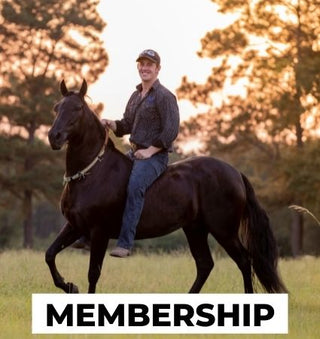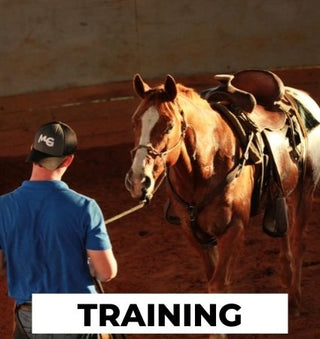Watch the Video Here or continue reading below!
When training a horse for better self-carriage and collection, one of the most important exercises is teaching them to drop their head using leg cues. This technique is especially beneficial for horses that tend to hollow their back, carry their head high, or struggle with transitions, such as a pacer learning to canter smoothly. In this guide, we'll break down the steps to achieve this effectively.
Why Teaching a Horse to Drop Its Head Matters
A horse that carries its head too high has difficulty engaging its hindquarters, which can result in discomfort, imbalance, and even potential injuries. Lowering the head helps the horse round its back, move fluidly, and improve performance in various disciplines, from Western pleasure to dressage.
Step 1: Flexion and Leg Awareness
Before focusing on vertical flexion (lowering the head), the horse must understand lateral flexion and respond to leg pressure appropriately. To begin:
-
Flex the horse’s head to the left using the left rein while applying slight left leg pressure.
-
Repeat on the right side, using the right rein and right leg.
-
Continue alternating to encourage the horse to associate leg pressure with yielding and softness.
This step prevents the horse from automatically interpreting leg pressure as a cue to move faster. Instead, it helps them learn to give to pressure while staying relaxed.
Step 2: Introducing Vertical Flexion
Once the horse understands lateral flexion, you can begin asking for a vertical give:
-
Apply both legs gently at the horse’s sides while holding the reins lightly.
-
The moment the horse lowers its nose slightly, release the pressure immediately as a reward.
-
Repeat this process, ensuring that the horse learns to associate leg pressure with dropping its head rather than speeding up.
Many horses, especially those not accustomed to collection, may initially resist or become confused. Consistency is key to reinforcing the correct response.
Step 3: Encouraging Self-Carriage
To promote self-carriage and proper engagement:
-
Use your legs to encourage the horse to lift its ribs while keeping rein contact light.
-
Imagine pressing on the horse’s belly as if prompting them to round their back, similar to how a gingerbread doughboy gives their belly.
-
Allow the horse to find balance and softness without excessive rein interference.
A horse that truly understands this will begin to drop its head automatically when leg pressure is applied, creating a more balanced and collected movement.
Step 4: Progressing to the Trot and Canter
Once the horse consistently lowers its head at the walk, progress to the trot:
-
Apply leg pressure as before, rewarding the horse for maintaining a relaxed and low head position.
-
If the horse struggles, alternate between leg cues and slight rein adjustments to maintain straightness.
-
Gradually build duration, allowing the horse to develop the necessary muscle strength to carry itself properly.
For horses with a history of pacing or struggling with the canter, this technique is crucial. A horse that understands collection and relaxation at the trot will transition into a smoother, more balanced canter over time.
Common Mistakes and How to Avoid Them
-
Using Too Much Rein – Over-reliance on rein pressure can cause resistance. Instead, prioritize leg cues and reward the horse for correct responses.
-
Allowing Speed to Increase – If the horse speeds up instead of dropping its head, return to a slower gait and reinforce the correct response.
-
Inconsistent Pressure and Release – The horse needs clear, consistent signals. Ensure that the release of pressure happens the moment the horse responds correctly.
Conclusion
Teaching a horse to drop its head using leg cues is a powerful technique that enhances their balance, relaxation, and overall performance. By starting with lateral flexion, progressing to vertical flexion, and then incorporating self-carriage at various gaits, you can create a more responsive and collected horse. Remember to be patient, reward small progress, and enjoy the process of building a better partnership with your horse.


